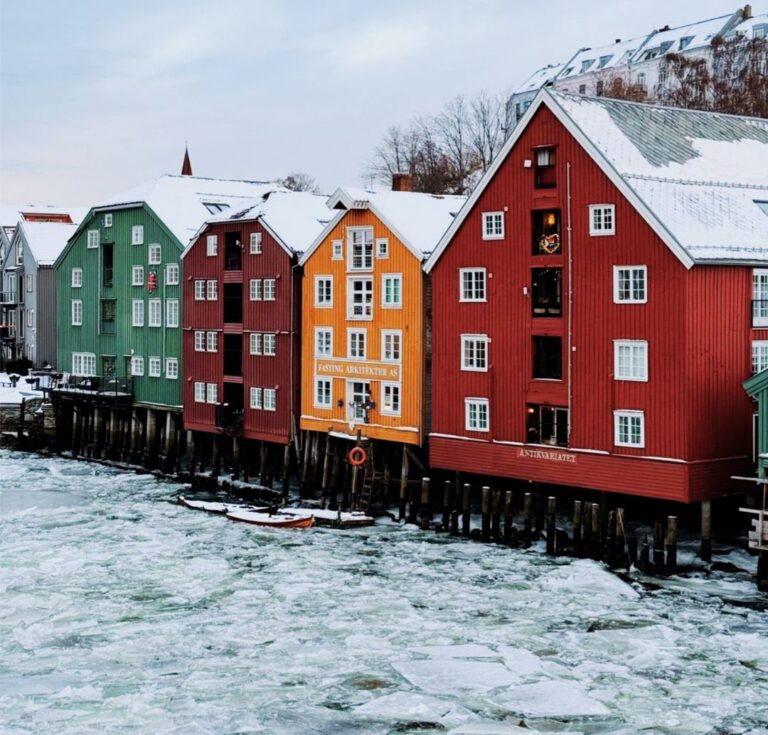The coldest ever temperature recorded in Oslo was among the records broken over the last few days. Read on for the full story of the January 2024 big freeze.
Well it's been quite the chilly week, hasn't it? After temperatures plummeted in the weeks before Christmas, Norway has suffered from another cold snap just days into the New Year. This time, temperatures plunged even further.

For the first time in recorded history, the thermometer in Oslo dipped below -30°C, while 15 other cold records were set across Eastern Norway.
Meteorologists attribute the cold snap to a mass of Arctic air sweeping across the region. Temperatures are expected to rise slightly in the coming days.
A New Record Low Temperature in Oslo
The cold has caused considerable disruption, with reports of frozen pipes and pipe bursts, particularly in the Oslo area. Here, new record low temperatures were set over the past few days.
Bjørnholt in Nordmarka, north of Oslo's Holmenkollen, recorded a new record low of -31.1°C. Temperatures of well below -20°C were recorded in built-up areas.

Public transportation systems, including trains, have faced significant challenges due to the freezing conditions. At least 18 train lines were affected.
The phenomenon of ‘frostrøyk' or ‘frost smoke' was observed on Oslo's waterfront, adding an unusual visual spectacle to the chilly conditions.
Responding to the crisis, Oslo's central train station opened its doors as an emergency shelter for the homeless. City shelters and organisations have expanded their capacity to provide refuge from the cold.
Insurance companies are dealing with a surge in related claims. Power outages have also been reported, notably near Oslo's Gardermoen Airport, impacting thousands.
Elsewhere in Norway
The weather system brought huge amounts of snow to southern Norway, causing cities such as Kristiansund to grind to a halt. Some schools in the southern coastal region were forced to close for safety reasons and then because of heating system problems.

Ski resorts including Hemsedal were among the businesses to close. It was too cold to run ski lifts and management were concerned for the safety of visitors.
The people of Finnmark in Norway's far north are no strangers to coldest weather. Generally speaking, it's the coldest part of Norway. But even Kautokeino experienced the coldest temperatures since the year 2000 a few days ago.
Temperatures dropped below -43°C in Økseidet, and lower temperatures were recorded in some valleys outside Kautokeino's centre. One farmer reported a temperature of -49°C.
It’s Not Over Yet
Roads are largely cleared of snow, yet they remain slippery and driving conditions are treacherous.
Authorities continue to advise those embarking on car journeys to carry essential items like food, hot beverages, and ample warm clothing in their vehicles, preparing for potential unforeseen delays.

According to state meteorologists, the spell of unusually frigid temperatures is expected to persist into this week, for the southern half of Norway at least.
In fact, we may see unusually big temperature differences between Oslo and Northern Norway. Temperatures in Kautokeino and Bodø are expected to be as much as 20 degrees higher than the Norwegian capital, almost unheard of in the winter.
Impact Across Scandinavia
The impact of the cold snap extends beyond Norway. Neighboring Scandinavian countries are experiencing similar conditions, with temperatures in Swedish Lapland plummeting to -43.6°C, the lowest in 25 years.
Denmark has been hit by strong winds and snow, prompting police warnings against non-essential travel. In the Arctic region of Finland, the coldest January temperature since 2006 was recorded.
The cold wave has also reached western Russia, with Moscow recording temperatures around -30°C, far below the usual for this time of year.

